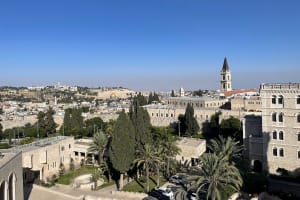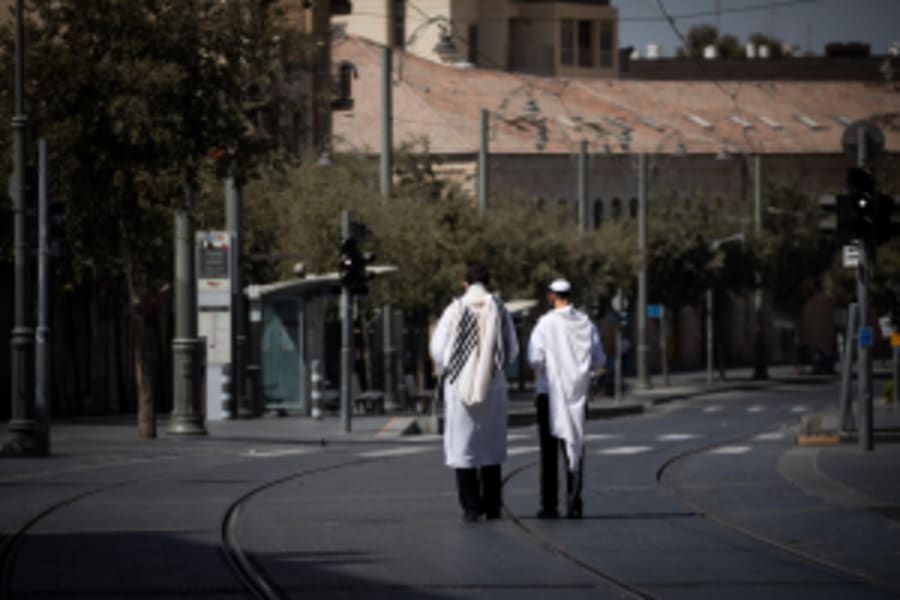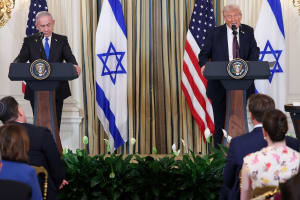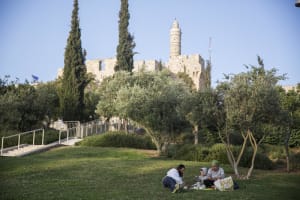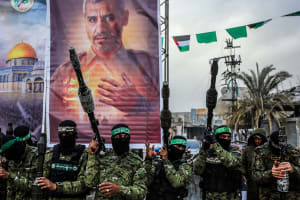Oct 7 art exhibit finds a home – far away in Armenia
Exhibit of Hamas atrocities in Yerevan bridges relations between the one Jewish and the first Christian nation

YEREVAN—An exhibit displaying art that emerged from the tragedies of Oct. 7, 2023, and curated from two dozen Israeli artists, was welcomed in the capital of Armenia on Sunday night.
The opening event – which took place just before the eve of both the Feast of Tabernacles and the second anniversary of the Hamas attacks – was initiated by the Yerevan Jewish Home and hosted at the Nikolay Nikoghosyan Cultural Foundation. The Honorary Consulate of Israel in Armenia delivered the artwork for the exhibition.
“October 7th: Israeli Art Reacts to the War” made its way to Yerevan from Tel Aviv via ANU, the Museum of the Jewish People.
Armenia, as a destination for the traveling Israeli exhibition – especially one with a politically-charged topic such as Oct. 7 – is a surprising choice considering relations between the two countries haven’t always been the warmest.
Though Israel and Armenia have had diplomatic ties since Armenia gained its independence from the Soviet Union in 1991, Israel’s refusal to recognize the Armenian Genocide and, more recently, its sales of deadly drones used by Azerbaijan against Armenia in the 2020 Nagorno-Karabakh War, have complicated relations.
But Sunday’s festive reception for the exhibition’s opening night contradicted perceptions of antisemitism and anti-Israel sentiment in Armenia – many times promulgated in the media – in addition to persecution of its small Jewish population that measures in the mere hundreds.
Jewish citizens in Armenia, some newly arrived from Russia since the start of the war with Ukraine, were interviewed at the event and said they’ve rarely – if ever – experienced antisemitism in the world’s first Christian nation.
“We have lived here for three years and have not experienced any antisemitism in this time,” said Nathaniel Trubkin, founder of Yerevan Jewish Home, which sponsored the event. “We organize many events connected with Jewish history and Jewish holidays and so on, and no one has opposed this.”
Far from the 'Free-Palestine' protests raging through Europe, Trubkin said his events have not experienced pushback. In fact, he said, they are changing the narrative.
“These kind of events are building relations between countries and governments,” he told ALL ISRAEL NEWS. “Sometimes we have to do it with our own money and efforts, but it is a very Jewish characteristic that if you can do something for the better good, you just do it. It is in our nature.”
Trubkin said that Jews visiting Armenia from other nations are surprised they can openly display their identity.
“We are very proud that here in Armenia we can show our support for Israel and we don’t have to worry about that,” he said. “When we decided to bring this exhibition to Armenia, our idea was that it is a humanitarian project – it is very important to share the tragedy. Tragedy has no nationality.”
Alexandra Livergant, who initiated the exhibition in Yerevan, said Armenians are well acquainted with tragedy, referring to the Armenian Genocide of 1915-1918 and recent wars with Azerbaijan.
“We all can feel this and it is important for us because it's not supported by government – neither Israel nor Armenian. It's just people, it comes from a community who want to show their support and share their support with the Jewish people,” she said.
When Livergant met the Israeli curator of the exhibit, Michal Houminer, at the airport, Houminer noted Livergant’s Jewish star necklace and asked if that was safe to wear.
“I told her, ‘Yes, I can wear it openly here,’” Livergant said.
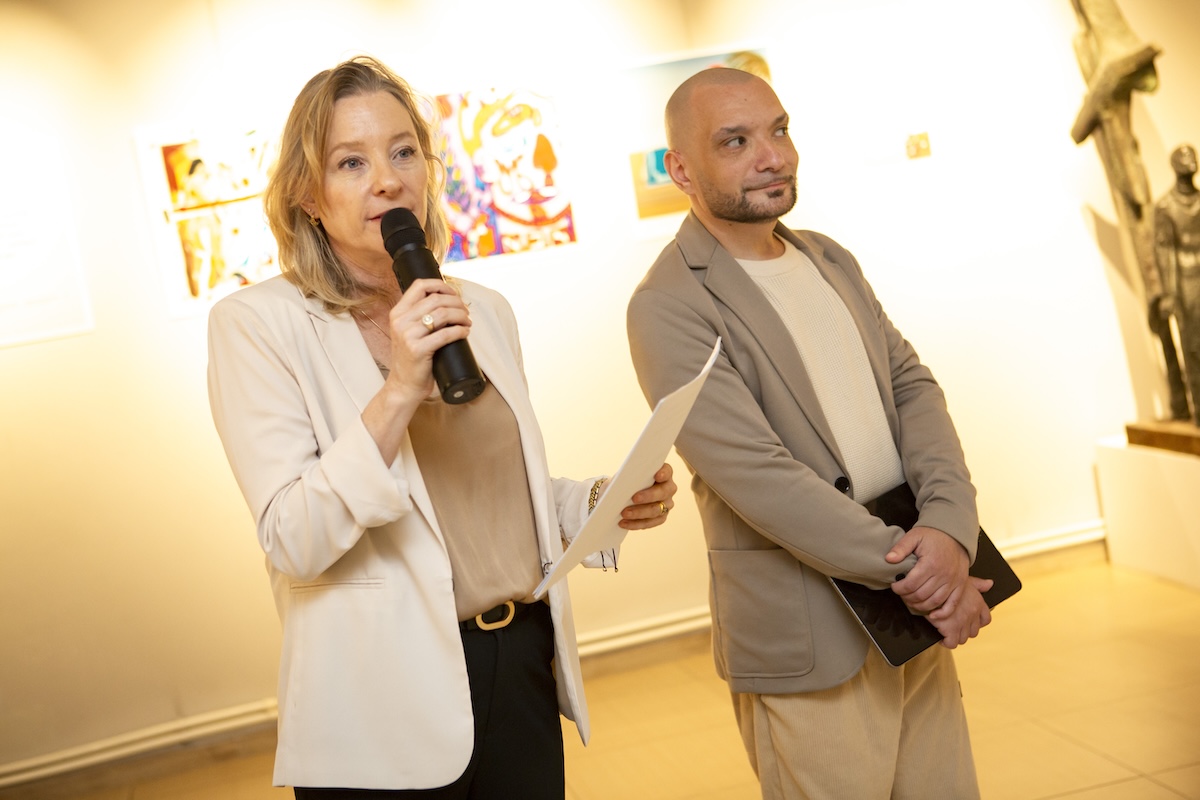
Back in Israel, ANU made the audacious decision to curate the original exhibition, which opened four months after the Oct. 7 terror attack. Though it was emotional, it was not difficult to find new work: Houminer saw artwork uploaded to social media on a daily basis.
“The exhibition has three elements: art, music and journalists’ photographs,” she told ALL ISRAEL NEWS. “There are 25 pieces of art and each work tells a story. Some of the artists were hurt directly, some were killed on Oct. 7 and their work donated, some of them did the work before Oct. 7 and it reflects their fear of the situation, and some of the work is of artists that did the work after Oct. 7.”
A digital display shows 300 photos of the devastation taken by journalists from Oct. 7 at 6:30 a.m. until Oct. 31.
Along with paintings and photographs, Houminer also curated 40 songs by popular Israeli artists that took on a more significant meaning after Oct. 7 when they were sung to comfort evacuees, hostages’ families and soldiers.
Like many other Israelis, Houminer sought to find her own way to help after Oct. 7.
“What I know to do is to create exhibitions. My strength – what I could give to the public – is through art, exhibitions,” she said. “This exhibition gives space for people to feel and express their emotions through their senses, through music and through reality.”
“The integration of these arts allows one to express fear, emotion, sadness, hope. In all of these works, you see both sadness and hope,” she noted.
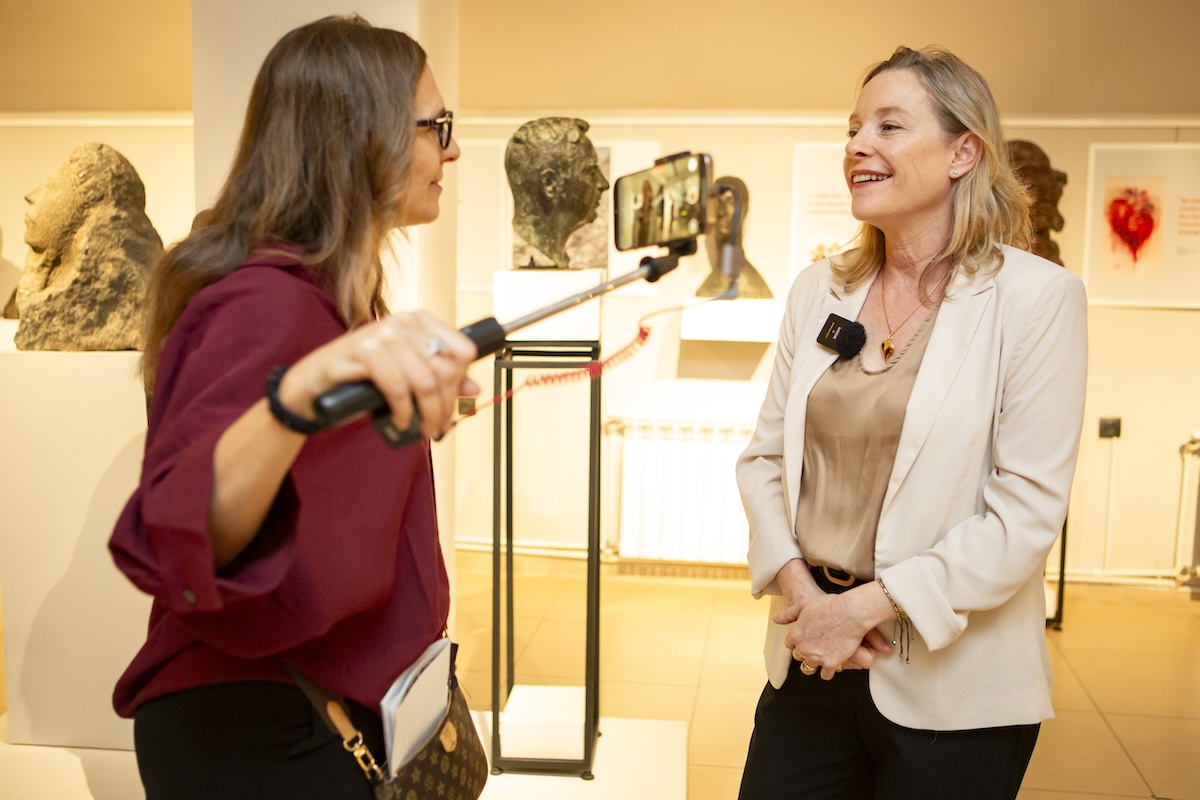
The process, however, brought Houminer in direct contact with tragedy and grief.
“It's the kind of exhibition that you need to meet with people. Some had lost their loved ones, and I would come to choose the work of someone who is no longer alive,” she said.
One of the displays features the last photographs taken by Israeli journalist Roee Idan, who was killed along with his wife Smadar, in front of their home on Kibbutz Kfar Aza. Idan’s youngest child, Avigail, was kidnapped by Hamas terrorists and released after 51 days. Idan managed to snap shots of Hamas terrorists paragliding into the kibbutz and send them to his news outlet, Yedioth Ahronoth, before his death.
Another artist, Ziva Jelin from Kibbutz Be'eri, survived the massacre; however, the kibbutz art gallery was completely destroyed. Her work, a painting of the gallery, is from 2018, but stands as a testimony of the gallery’s existence before its destruction.
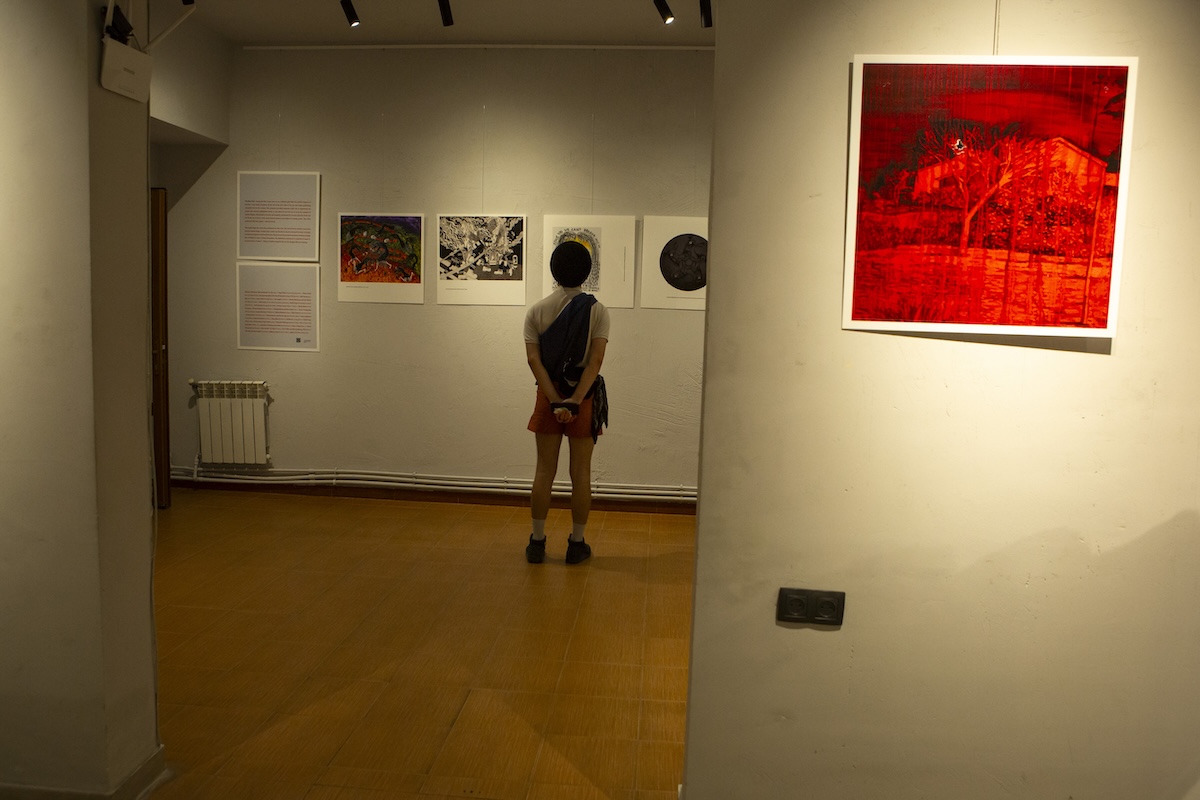
The opening of the exhibition in Yerevan was meaningful, Houminer said, despite the raw and tragic material.
“I wish the subject would be something else and not Oct. 7, war and the bad things that happened to Jewish people in Israel and around the world,” she said. “But I’m glad to be able to tell the story from the Israeli point of view and to make some dialogue between the Jewish community in Yerevan and the Jewish community in Israel. I think it's a good connection and a good place to make a dialogue.”
An initial showing of this exhibition was organized in Yerevan at the end of May by Joel Lion, ambassador of Israel to Armenia, and the Honorary Consulate of Israel in Armenia for Israel’s Independence Day.

Nicole Jansezian is a journalist, travel documentarian and cultural entrepreneur based in Jerusalem. She serves as the Communications Director at CBN Israel and is the former news editor and senior correspondent for ALL ISRAEL NEWS. On her YouTube channel she highlights fascinating tidbits from the Holy Land and gives a platform to the people behind the stories.
You might also like to read this:


